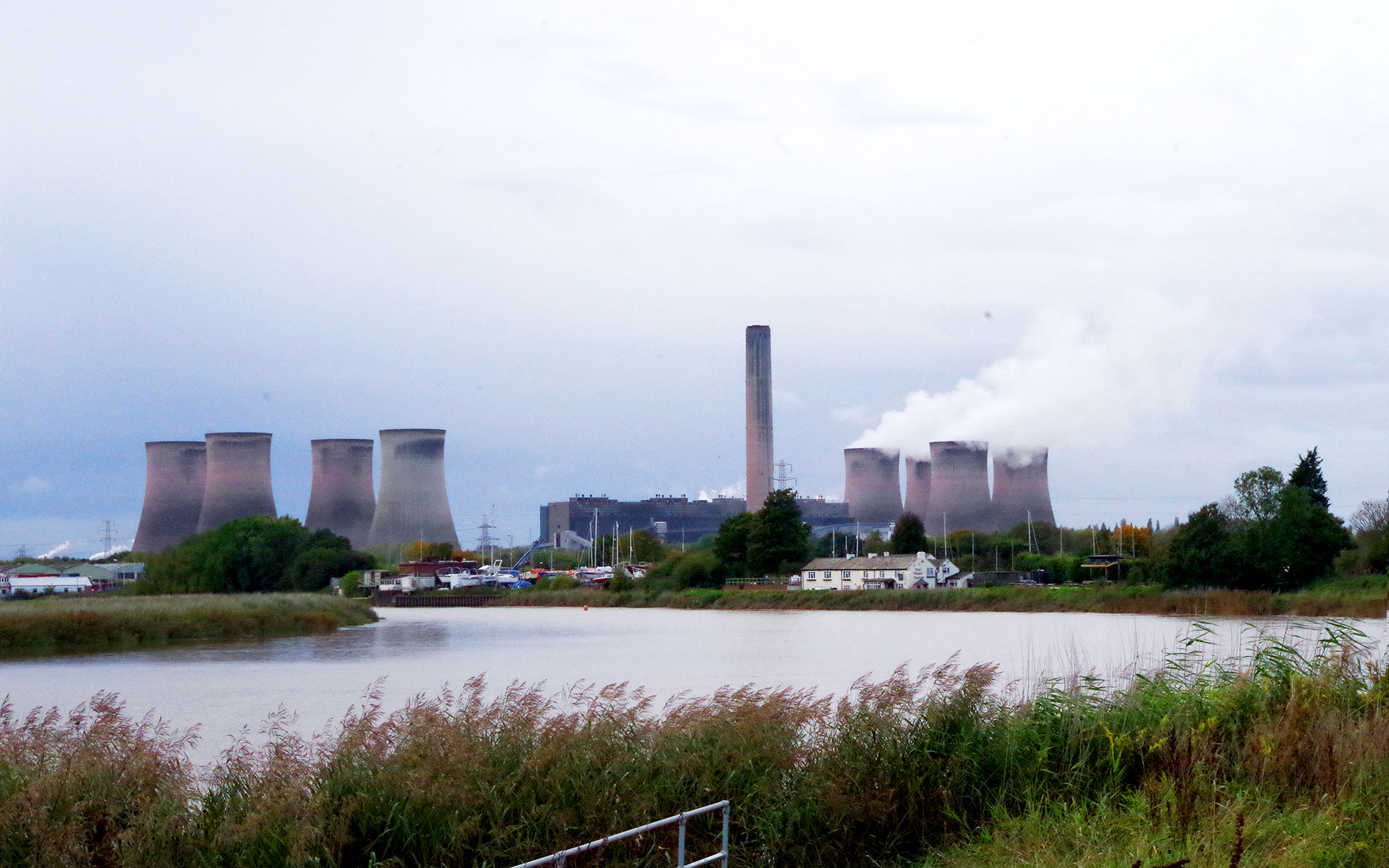Fiddler’s Ferry Power Station Plays Out
On March 31st 2020, amidst the Covid-19 pandemonium, Scottish & Southern Energy (SSE), the latest owners of Fiddler’s Ferry Power Station, finally shut down its turbines; this after a long period of doubt & temporary stoppages.
The Central Electricity Generating Board (C.E.G.B.), with Cleveland Bridge Company as main contractor, started construction of Fiddler’s Ferry in the mid-1960’s with the station going online in 1971. At its peak, the power station had the capacity to deliver just under 2GW of power, which required 16,000 tons of coal daily to achieve. All of which was delivered, by rail, from UK coal mines.
Supply
Coal was supplied mainly from local mines such as Bickershaw and Parkside (under 10 rail miles away) and from South Yorkshire. Coal from Yorkshire used the Woodhead Route with electric haulage as far as Godley Junction (Stockport) where diesel power took over. This route closed in 1981 and coal was diesel hauled via Diggle. Wherever the origin, up to twenty 1500 ton ‘Merry Go Round’ trains a day fed the power station. They also maintained a stockpile of hundreds of thousands of tons to cover for potential delivery issues!
Some coal was brought in from Scotland as late as 2015. But, from about the turn of the century, coal was imported from as far afield as Colombia, Russia and Australia. Much of the coal was imported through Liverpool, with some via Hunterston in Scotland and Avonmouth near Bristol. There was a small shift to using imported biomass (mostly wood chips) but this was delivered by road.
A considerable amount of ash and flue-gas desulphurisation by-products had to be disposed of, also removed by rail to be used in the manufacture of building materials. Over the years, the station underwent various alterations to reduce its emissions, but it was only postponing the inevitable. In 2019 capacity was reduced to 1.5GW: the end loomed large!
The Chimney
At 200 metres (660ft) tall the chimney was a well-known Northwest landmark. Many will have had an aerial view as it sits just off the flight path for Liverpool’s John Lennon Airport. On a clear day both the chimney gases and the water vapour rising from the eight 114metre high (375ft) cooling towers, made it visible along the Mersey Valley.
The Power Station’s Signage
The power station’s signage, at the main entrance gate, uses an apostrophe: Fiddler’s Ferry. The railway signal box controlling rail access to the power station spur is called Fidlers Ferry Power Station, a single “d” and no apostrophe! Within the signal box itself, its rail “diagram” is labeled “Fiddlers Ferry Power Station”! Now add to this, the nearby, and long closed, passenger station also had both spellings, plus and minus the ‘optional’ apostrophe! Even maps aren’t exempt from this quirk either!
That 660ft chimney is but an outer skin, hiding 4 separate flues within. When it is finally demolished, Blackpool Tower, at a mere 158mtrs (520ft), gets to be the Northwest’s number one highest spot once again!
Article by Bob Bowden, Member of Council, Newcomen Society


Great content, it will help in my business Thanks for sharing useful information. Respectfully, David, author of the blog https://tragbarepowerstation.de/
Taylor Woodrow were the main civils contractor; Cleveland Bridge the structural steelwork; Higgs and Hill the building contractor; Yorkshire Hennebique the cooling towers; Shellabear Price the ash lagoons; Tileman the main chimney; Bierans (?) the ash precipitators; and more including the Cuerdley Cross pub providing the necessary beverage